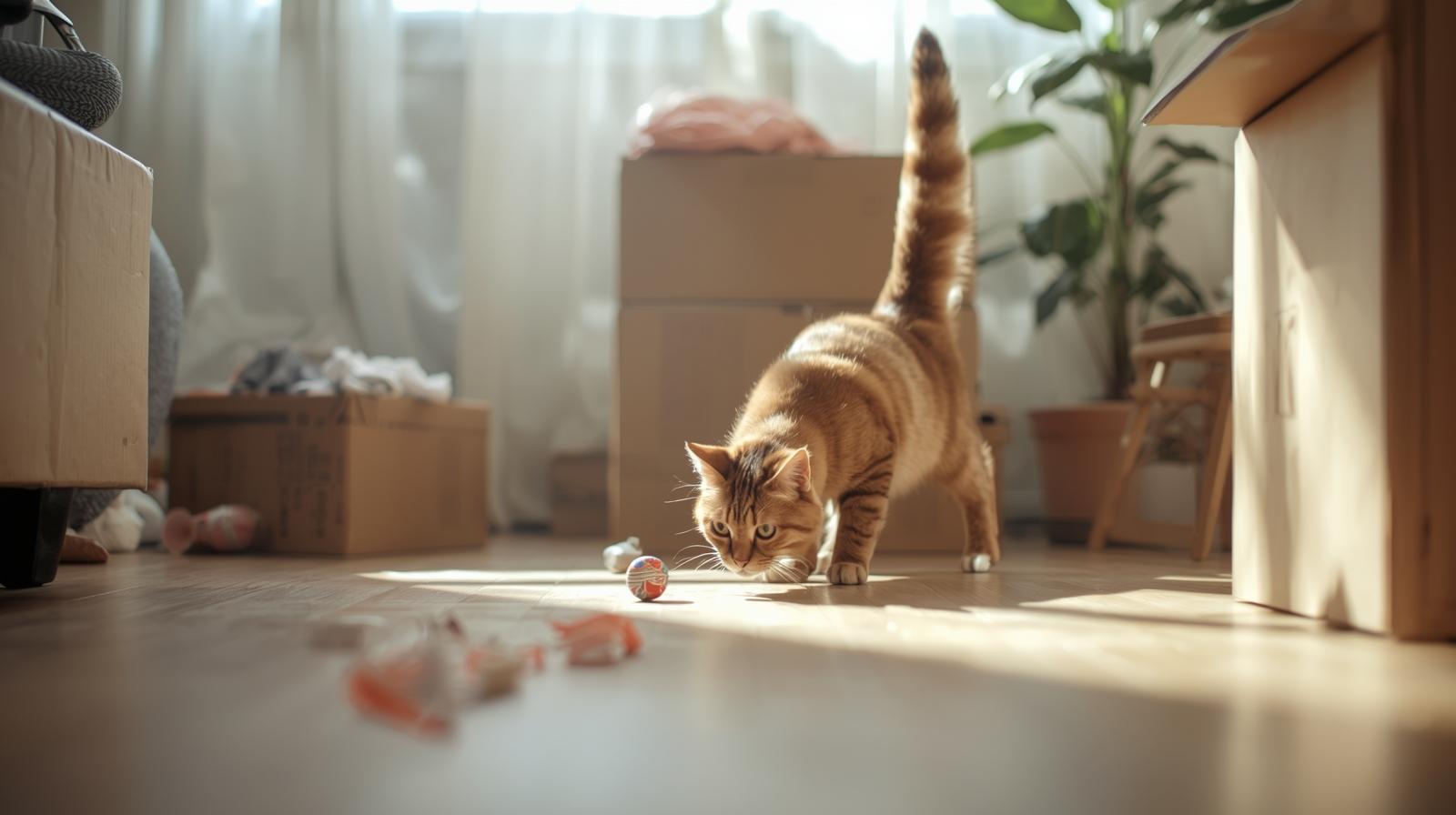Why Introducing Cats to New Environments Matters
When it comes to introducing cats to new environments, patience is everything. Cats are highly territorial and rely on familiar scents, routines, and surroundings. Moving to a new home can trigger stress, hiding, or even aggression.
According to the American Veterinary Medical Association (AVMA), cats may take several days or weeks to adjust to new environments — but with the right approach, you can make this transition stress-free and even enjoyable.
Prepare Before the Move
Before moving day, start planning early. Preparation helps your cat feel secure during the transition.
Tips:
-
Keep your cat’s essentials — food, litter box, toys, and bed — separate from moving boxes.
-
Introduce your cat to the carrier a few weeks ahead of time by leaving it open and cozy with treats or toys.
-
Visit your vet for a pre-move check-up and update microchip or ID tag details with your new address.
Read More: Best Cat Essentials for New Owners
Create a Safe Room for Your Cat
The first step after moving is creating a safe room. This helps your cat gradually adjust to their new home without becoming overwhelmed.
What to include in the safe space:
-
Litter box and food bowls
-
Cozy bed and hiding spots
-
Scratching post and toys
-
Familiar blanket or item from your old home
Keep the door closed for the first few days, allowing your cat to relax and explore at their own pace.
Keep Familiar Scents Around
Cats depend on scent to feel safe. When introducing cats to new environments, don’t wash their bedding or toys right away. The familiar smell gives comfort and reassurance.
You can even rub a soft cloth on your cat’s cheeks and then wipe it on furniture or doorways — this spreads their scent and helps them “claim” the new space.
Let Your Cat Explore Gradually
Once your cat is calm in the safe room, open one new room at a time.
Let them explore freely and avoid forcing interaction.
Watch for:
-
Tail up = confidence
-
Hiding or crouching = fear
-
Sniffing around = curiosity
Cats adjust best when they can control their own pace.

Stick to a Consistent Routine
Routines are comforting for cats. Try to feed, play, and clean the litter box at the same times every day.
Consistency helps reduce stress and builds trust in the new environment.
If your cat had a favorite napping spot or toy setup before, try to recreate it in the new space.
Monitor for Stress and Anxiety
Even with preparation, your cat might show signs of stress when introducing cats to new environments.
Watch for:
-
Hiding for long periods
-
Refusing food
-
Over-grooming
-
Ignoring the litter box
If symptoms last longer than a week, consult your vet. You can also read more about stress in cats from ASPCA’s Cat Care Resources.
Use Positive Reinforcement
Reward calm behavior with treats, praise, or gentle petting.
If your cat ventures into a new room or plays comfortably, give them a treat — this builds confidence.
Never yell or punish fearful behavior; instead, make the environment more inviting with toys, vertical spaces, or cozy hiding spots.
Consider Calming Aids or Pheromones
Many U.S. veterinarians recommend pheromone diffusers like Feliway Classic to ease anxiety during transitions.
These mimic natural cat pheromones that signal safety and calmness.
You can also play soft music or use natural calming sprays to help your cat feel at peace while exploring.
Celebrate a Smooth Transition
Moving with a cat isn’t easy, but the reward is worth it — a happy, confident feline in a safe, loving home.
Take time to play, bond, and give them affection every day. Within a few weeks, your cat will proudly rule their new kingdom.

